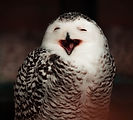How to Read Faster and Improve Comprehension
- Alex Chen
- Mar 28, 2021
- 7 min read
Updated: Nov 5, 2025
Whether you’re a student in school or a student of life, the ability to read and learn is a key skill.

Harry Truman said,
“Not all readers are leaders, but all leaders are readers.”
Warren Buffet said,
“Read 500 pages…every day. That’s how knowledge works. It builds up, like compound interest. All of you can do it, but I guarantee not many of you will do it.”
Walt Disney said,
“There is more treasure in books than in all the pirate’s loot on Treasure Island.”
Unfortunately, our school system doesn’t teach us how to read effectively. As a teacher, I know many students often complain about having too much reading to do.
That’s why I decided to take the Kwik Reading course from Jim Kwik, a world-renowned brain coach. The program taught me how to read faster while also increasing comprehension. I sure wish I had taken this program when I was a student!
In this article, I summarize the key things I learned to help you improve your reading speed and comprehension.
Key Ideas:
Think FAST
Use a Visual Pacer
Indent
Reduce Eye Fixations
Reduce Subvocalization
Practice the 4-3-2-1 Speed Drill
Skim Before Reading
Ask Questions Before Reading
The first six key ideas are for increasing reading speed. The last two are for increasing comprehension. Many people think reading faster automatically means reduced comprehension, but that's false. When we read faster properly, we have more focus, which means our comprehension actually increases.
Key Idea 1: Think FAST
Fast means forget, active, state, and teach.
Forget: When reading, we need to forget about our distractions and focus on reading. We also need to forget our limitations (like “Oh I’m not a fast reader”).
Active: We should read with energy. To increase our reading speed, we need to practice daily, just like going to the gym.
State (emotion): The fastest learners are children, and it’s because they bring a great state towards learning. We need to bring out a state of excitement, wonder, and interest to learn faster and better.
Teach: When you learn with the intention of teaching, you pay more careful attention. When you teach, you get to clarify your understanding. If you have no one to teach, talk to your wall.
Key Idea 2: Use a Visual Pacer
The two common visual pacers are a pen or your index finger. Have you ever noticed that children naturally use their finger to follow along the words on a page when they first learn to ready? It’s a great thing to do because it helps our eyes focus and not get lost on the page. If we get lost, we end up having to go back and re-read things, which greatly slows down our reading speed.
A couple tips on using visual pacers:
Instead of bending your finger along the page, move your whole arm. That’s less tiring.
Don’t bend your body down to read a book flat on the table. Instead, sit upright and tilt the book. When you sit upright, your lungs can open, so you can breathe better and be more focused.
Key Idea 3: Indent
Most people when they read, the go from the very left of the line to the very right. But we have peripheral vision. That means we can start a little bit away from the left and end a little bit away from the right. That will increase your reading speed.
Example:

The more you practice using your peripheral vision, the better it gets, which means you can indent even more with practice.
To improve our peripheral vision, we can use put our index finger out in front of our nose, and then trace the ∞ symbol. Use your eyes to follow your finger without moving your head. Jim Kwik recommends we do that for a minute before reading to warm up our peripheral vision.
Key Idea 4: Eye Fixations
Most people drag their finger along the entire line and read each word in the line. This results in our eyes making many stops or “fixations” along the line. Each stop takes time. To increase our reading speed, we can reduce the number of stops by using our peripheral vision. In other words, we don’t need to read one word at a time. We can train ourselves to see and read groups of words at a time.
For example, when we see the word “hot dog”, we don’t need to think “oh hot and dog together is the food that people eat.” We automatically see it as one word. The same can be said for “New York City”. We don’t read the three words separately; we see it as one word. With practice, we can learn to see groups of words all the time.
In order to practice this, simply take your book page and divide equally using 3 or 4 lines depending on how wide your page is.
Here is an example:

Put three dots at the top of your page to divide the page into equal thirds. Then imagine vertical lines from those dots all the way down. Then when you use your finger, don’t drag along the whole line. Instead, jump to those three dots. This limits your fixations to just three stops.
Key Idea 5: Reduce Subvocalization
Subvocalization is your inner voice reading to yourself. If you have to say each of the words, then your reading speed is limited to your talking speed instead of your thinking speed. Speed readers who can read 600+ words per minute have little subvocalization.
You don’t have to pronounce words to understand them. 95% of words are sight words, which means you know them by sight not sound. Also, a lot of words are just filler words (e.g., and, there, the). As your reading speed gets faster, you will want to reduce subvocalization.
One technique to reduce subvocalization is to say “1-2-3” while reading. You can say it inside of your head or out loud. At the beginning, it’ll be hard, and your comprehension will drop. But with practice, you’ll get used to it. Jim Kwik said this technique is optional since when we start speeding up the reading, subvocalization will naturally reduce.
You will never totally eliminate subvocalization, nor do you necessarily want to. It’s also appropriate to subvocalize if you are reading information that is unfamiliar to you or if it’s really technical information. For example, students reading a textbook will probably find it appropriate to slow down and subvocalize when they come across important information.
Key Idea 6: Practice the 4-3-2-1 Drill
For muscle growth, we have to stretch and stabilize. Same for our reading skills. The 4-3-2-1 drill is like lifting weights for your reading muscle. Here’s how it works.
First, read your book for 4 minutes. Mark where you started and ended. That’s your running track. We’re going to run that track 3 more times.
Second, re-read that same track, but this time, finish it in 3 minutes. It’s fine for comprehension to drop. We’re practicing speed.
Third, re-read that same track, but this time, finish it in 2 minutes. Keep using your finger as a visual pacer. You have permission to skip lines.
Fourth, re-read that same track, but this time, finish it in 1 minute. Again, your eyes must follow your finger, and your finger must cross that finish line in 1 minute. It’s essentially scanning not reading, but that’s fine. We’re training your mind to not just read faster but also think faster.
After doing this 4-3-2-1 drill, you can go back to reading as “normal”, but what you’ll notice is that your normal speed is much faster than before you did the 4-3-2-1 drill. Your reading muscles got stronger.
This exercise is the main exercise we need to practice to greatly improve our reading speed. In the 21-day reading program, Jim Kwik had students practice it daily.
Key Idea 7: Skim Before Reading
Some researchers conduced a study where one group read something twice, while another group skimmed and then read it. Can you guess which group did better on a test? The group who skimmed first! Why?
Skimming lets you get an overview first
When you skim, you don’t get all the answers you want. You get confused. You ask questions. Then when you read it, you find all the answers.
When we skim, we want to create confusion and even panic in our minds. Then when you read it, you will find answers. This also saves time compared to reading something twice.
Ways to Skim:
Take your finger and just go right down through the page. You miss a lot of peripheral vision but you get the key words.
Use your finger and go through a Z or S shape on the page.
Read 1 line forward then 1 line backward.
When skimming, you can look at the pictures, diagrams, subtitles, and keywords. These will help raise questions in your head. Skimming should be very, very fast. If you skim too slow, it becomes reading not skimming.
Key Idea 8: Ask Questions Before Reading
When you skim, you’ll naturally think of some questions. Skim through all the pictures first. You might ask yourself what those pictures are about.
Look at all the headings. You can turn headings into questions. For example, if a heading says “Photosynthesis”, you might ask, “What is photosynthesis? Why should I care?”
If you’re a student and the teacher assigned you a reading, the teacher probably also assigned reading questions. Read through all the questions first. Skim through the reading and have a guess and where the answers might be.
Then, when you read, you will be more focused because you’re looking for answers as opposed to just trying to ingest everything on the page.
If you're not sure what questions to ask, here are some good questions you can always ask when reading non-fiction:
Why did the author write this book? (when reading the introduction)
What are the main ideas here?
How can this be useful in my life?
Summary Video
Although I took a paid-course on speed reading, there's actually a great 9-minute video by Tim Ferriss on how to speed read. It talks about most of the things I learned in the course.
Conclusion
Reading is a skill. If you know the proper technique, you can get better instantly. Some easy techniques are to use your finger, indent, and reduce eye fixations. Reading is also like a muscle. If you work out a muscle, it becomes stronger. You can work out your reading muscle using the 4-3-2-1 drill once a day. To improve your reading comprehension, skim beforehand and note down some questions.
One important thing to be careful about is that we shouldn’t feel rushed or anxious when we are reading, as if we are trying to just finish as soon as possible. We learn these techniques to improve our focus. In this way, we read faster while also improving comprehension.
Now that you know how to read better, the most important thing is to go and practice! Once you see your reading ability improve, I hope you will enjoy reading and be a life long learner.
As Dr. Seuss said,
“The more that you read, the more things you will know. The more that you learn, the more places you’ll go.”
.jpg)